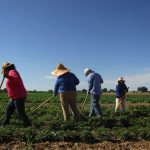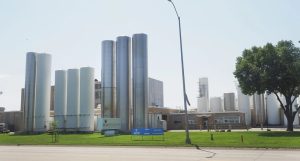
Worsening Situation
Despite federal government assurances, bird flu continues to haunt the dairy sector in the U.S. The government hopes to eradicate the disease from dairy cattle without needing vaccines. Since its discovery in dairy cattle on March 25, the virus has infected 129 herds across 12 states within three months. However, California remains unaffected.
Over just the past month, the number of confirmed cases nearly doubled, rocketing from 68 to almost twice that. Unfortunately, the industry appears hesitant to partner with government bodies for large-scale herd testing.
A Hidden Threat
The absence of extensive surveillance replenishes concerns among epidemiologists. They fear the unchecked virus spread among cows and other animals, creating a habitat for the virus. David Topham, a microbiology professor at the University of Rochester, argues that H5N1 may already be endemic in domestic and wild animal populations in North America.
The actual spread among cattle remains unknown because testing focuses mostly on symptomatic cows and herds. Topham fears the deeper the investigation, the greater the discovered spread.
Resistance from the Dairy Industry
Topham understands the dairy industry’s reluctance against thorough examinations due to potential business risks. However, he asserts control cannot be achieved without complete information.
The federal government introduced a pilot program for bulk milk testing in Kansas, Nebraska, New Mexico, and Texas. Farmers can voluntarily have their milk tested for the virus. Negative test results will lift the ban on moving their herds between states. However, so far, only one herd from each state participated.
Uncontrollable Spread of the Virus
A USDA strike force investigated 15 infected Michigan dairy herds and eight turkey flocks in April. Domestic cats and chickens were found roaming freely among dairy and poultry farms. Several infected animals were found, some of which had died.
A revelation of poor practices, such as dumping infected unpasteurized milk in open lagoons and feeding this milk to calves, was discovered. Also, potentially contaminated manure was sold, given away, or stored and composted in nearby fields. Furthermore, humans, including visitors and employees, were reportedly moving between multiple farms, spreading the virus.
Uncertain Future
No one can predict where the virus will head next. If the virus becomes endemic in cattle and adopts the name “bovine influenza,” vaccines, continuous surveillance, and dairy product testing will become necessary. It is worrisome how the virus will evolve while moving undetected through cattle herds, other farm animals, and humans. Three U.S. dairy workers have already contracted H5N1.
Prevention is Better than Cure
Michael Payne, a researcher at UC Davis, claims no one is responsible for the lack of containment. He describes the response to the outbreak as a series of incremental solutions. Dennis Nash, a professor at CUNY, warns that the recent detection of H5 influenza in wastewater samples from Boise, Idaho, should be treated as H5N1 until proven otherwise. Idaho has 27 infected herds, although none in the Central District.
Given the current predicament, determining the source of the infected wastewater needs immediate attention. Experts agree that we must remain vigilant for any signs of the virus adapting harmfully for humans. With the horse already out of the barn, staying alert to prevent the virus from evolving is the only way to keep things in check.
You can now read the most important #news on #eDairyNews #Whatsapp channels!!!
🇺🇸 eDairy News INGLÊS: https://whatsapp.com/channel/0029VaKsjzGDTkJyIN6hcP1K























